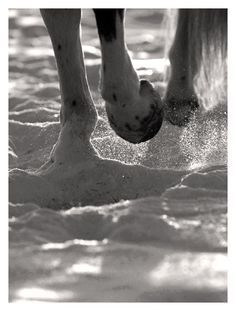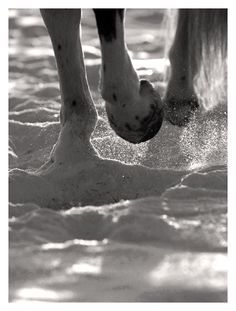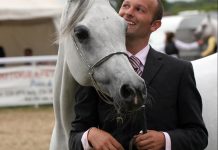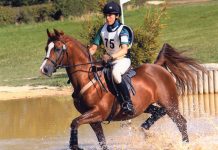There are times when it is easy to determine that our horses are in pain as they show us their problems quite clearly in their reactions. Most lameness is caused by pain, although there are some biomechanical causes, flinching away from pressure, avoidant responses such as dipping the back when groomed, tacked up or mounted, and physically resistant behaviour in what is normally a co-operative horse all tell us there is an issue to address. However, there are instances where the signals are more subtle, and for many horses, these subtle signals are ignored.
For the more docile and stoic horse, and indeed this is true of individuals within many species of mammals, the subtle signals will be repeated time and time again, gradually escalating in severity until they are heeded. However, for some breeds, notably the Arabian, Thoroughbred and Warmblood types, if the subtle signs are ignored, the horse will escalate the severity of behaviour quite suddenly. In some future cases the horse will simply leave out the subtle signals and go for the full on, pain-induced, big behaviour that got attention the previous time, even when the actual pain felt is far less intense.
These horses can then be branded as ‘bad characters’ when, in evolutionary terms, they are simply demonstrating an evolved predisposition to communicate a potential problem clearly from the outset, having learned that previous communication had not been effective. In fact, it is our lack of understanding of the subtle signals demonstrated in the first instance that causes the issue.
So, what are the subtle signals? Well, they can be varied for each horse, but as a guide it is wise to look for facial signals, such as nose wrinkling, a staring eye rather than a soft eye, ears positioned backwards without the presence of a specific source of interest behind the horse, and/or a tight mouth. Body signals can include a swishing tail, skin twitching when touched, sharp movements, foot stamping, and avoidance movements away from you or the tack, for example.
These subtle signals are often ignored, or the horse is restrained further to prevent the signals even being given. Escalation of pain-induced behaviours can then result in biting or kicking when saddled or girthed, resistance going forwards, bucking, napping and rearing when ridden. The first time this happens, the conscientious owner may then have the horse checked out by a vet or therapist for an underlying reason. However, be warned that the horse will have already learned that next time something hurts, they must bite, kick, buck, nap or rear in response.
If you recognise this pattern in your own horse, then perhaps you are now thinking that you will never get your horse to stop the biting, kicking, bucking, napping or rearing. Well, it is possible to re-educate him using positive reinforcement and by recognising all of the subtle signals he offers. Luckily, the same horses that have the intelligence and sensitivity to escalate their behaviours so suddenly are also actually quite trainable again once the pain has been removed, as long as you take the time and use a lot of positive encouragement.
On the whole, we use a lot of negative reinforcement to train horses, for example, we apply leg pressure to send a horse forwards and stop ‘kicking’ when he responds. The removal of the leg pressure equates to the removal of something negative in the horse’s mind, which reinforces the horse to move away from the leg pressure each time. However, by using positive praise, food treats, or regular breaks in work combined with verbal praise, scratches and treats, we can rebuild our horse’s trust in us and they will start to offer the more subtle signals again.
One such case was a pony with a history of back pain resulting in a lot of air biting that escalated into biting the owner when saddled and girthed. Once the back pain had resolved, the pony was initially only tacked up when fed, and no ridden exercise took place, allowing the pony time to re-associate the saddle with a pleasurable experience. Once this had been successful, and the ony was happy when the saddle was brought in, ridden work commenced but the pony was always given a few carrots to eat as he was girthed up, to maintain the positive association. When the pony did start to get sore again, the owner noticed he wrinkled his nose and nudged the owner as she brought the saddle in. This time the owner recognised the small signals and responded accordingly with treatment and saddle checks so that the big physical responses were no longer necessary.
So take note of your horse’s expressions and behaviours in different situations, he could be telling you more than you realise.












